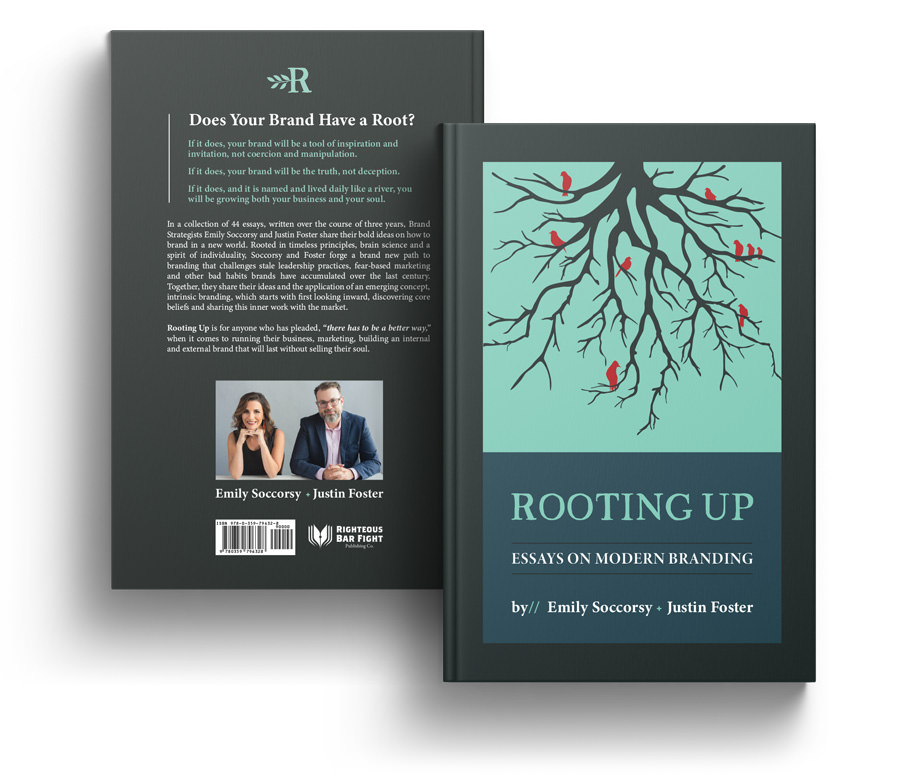Filed Under: 21st Century Branding
By Emily Soccorsy + Justin Foster
When people tell us they’ve been through a re-brand, first we get excited.
Then we get curious. Then we ask what the effort entailed.
“Oh, a new logo and tagline.”
Then we get sad. Wah-wah.
True story.
We get sad because we care. Because to us, your brand is more than your visual representation, and it’s more than a schmaltzy, cheesier description of your product or service.
Re-branding by creating some new visuals and a snazzy tagline is like going to the fair without riding the roller-coaster. You missed out!
So what is a re-brand? What does it really entail?
- If branding is first a spiritual exercise, then so is a re-brand. A re-brand is a re-invigoration of your mission, values and vision. This critical step is essential because companies tend to drift away from these moorings over time. By re-connecting to these three essentials, you remind yourself, your leadership team, employees and customers of your purpose and value in the world.
- A re-brand often requires a house-cleaning. A purging of the old to make space for the new. This can be literal (like an old website or marketing material) or more intangible (like old ideas and old thinking). This requires casting a skeptical eye on all parts of your brand and seeing what stays, what gets re-purposed and what needs to be hauled off to the local Goodwill.
- When you are preparing to re-introduce your brand to the world, it’s important to understand that everything is up for review and consideration. This requires a re-examination of your business model, product lines, and pricing strategy. A re-branding can’t just be new packaging of the same ole, same ole. That just creates cynicism with employees and yawning from customers.
- When facilitated correctly, a re-brand will naturally create innovation in your organization. A re-brand should always entail bringing relevant stakeholders to the discussion party and hearing from them about the places the brand promise is strong and the places where it is worn. In a healthy organization, this leads to discussion about how you can improve that worn-out experience with innovative ideas and efforts. It should also generate the energy for people to tackle these initiatives. If your re-brand didn’t do that, it’s a sign it might not have been an inclusive-enough effort.
- It is an absolute must to invite your employees, customers and influencers to actively participate in the re-brand. This is why announcing a new logo or new website as a “re-brand” is often met with apathy. The people who touch your brand own your brand. They share their feelings and ideas outside of the traditional constraints of business. When they are enrolled, they take this enthusiasm into their circles of influence as an expression of themselves.
It’s important to set your expectation of the timeline and impact of a re-brand. A re-brand is not a one-time event. It’s not a big splash and then a fading back to average. Plan on at least a 6-month roll-out – with a series of events organized around your various audiences, refreshed content and – if called for – a new logo and website.
And if you get asked about the ROI on a re-brand, we have this handy reply for you to use: “What’s the ROI of having a brand everyone in this organization loves?”
Emily Soccorsy + Justin Foster are cofounders of the intrinsic branding practice known as Root + River. Together with their defiantly different clients, they uncover then articulate the foundational elements of the brand. Then, they provide brand strategy and brand coaching as the brand is rolled out internally and externally. Obsessive about language and differentiation, Emily + Justin are also authors and speakers. Follow @rootandriver @fosterthinking and @emilyatlarge.
